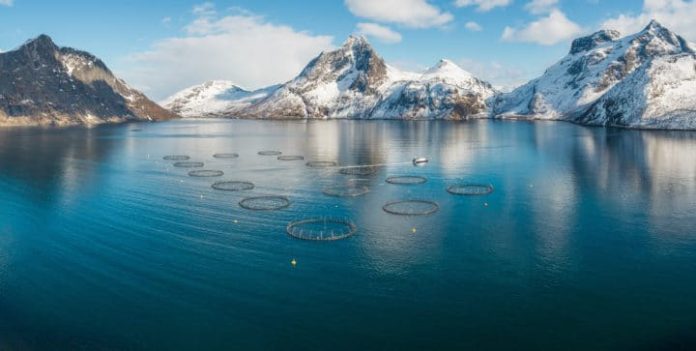An increase in emergency harvests and use of processing boats for 2023 indicates significant hidden welfare challenges according to a new report from the Norwegian Veterinary Institute.
The 2023 Fish Health Report from the Norwegian Veterinary Institute has revealed the main causes of mortality rates in Norwegian aquaculture.
A total of 37.7 million salmon and 2.4 million rainbow trout over 3 grams died in hatchery production on land. Additionally, 62.8 million salmon (16.7%) and 2.5 million rainbow trout (14%) died in the marine phase. The marine mortality figures for salmon are the highest ever recorded.
The primary health challenges identified in 2023 remain consistent with the previous year: damage from de-licing procedures, gill disease, and winter sores.
Notably, 2023 saw jellyfish-related damage becoming one of the top ten health challenges. Concerningly, there has been an increase in detections of bacterial kidney disease (BKD) and four cases of pancreatic disease (PD) north of the usual PD zone.
The report compiles data from official registers, the Veterinary Institute, private laboratories, surveys among fish health personnel, and for the first time, includes information from the AquaCloud fish health database.
DNB links borrowing costs to welfare goals as bank exec calls mortality crisis ‘unacceptable’
A turbulent year
The 2023 Fish Health Report highlights a turbulent year for the Norwegian aquaculture industry, marked by challenges but also significant revenue from salmon exports.
Major expenses incurred included high biological costs related to health, welfare, treatments, mortality, and reduced production. Sea lice remains a key cost driver, but overall health and welfare in the industry continue to face challenges, with a record number of fish deaths in the sea phase.
There’s an increase in emergency harvests and use of processing boats, indicating significant hidden welfare challenges. Notably, a higher proportion of “production” grade fish, which don’t meet superior standards, was seen, raising questions about the underlying welfare issues of these fish.
Despite these challenges, there have been positive developments. Sjømat Norge presented a guide for the industry, emphasizing the importance of biosafety and disease control. Their initiative represents a maturity test for the industry, urging collective effort and resources to prevent and control diseases and ensure future fish health.
The Fish Health Report 2023 includes data from the AquaCloud industry initiative, revealing the main causes of death for farmed salmon in Norway.
Jellyfish
Notably, the category “Environmental conditions” contributed less than 1% of mortality from 2020 to 2022 but increased to 2.9% in 2023, with jellyfish-related issues accounting for 1.7% of cause-specific mortality.
This data provides insights into causal relationships and risk factors associated with increased mortality.
The report also addresses the issue of cleaner fish mortality, highlighting that data is still insufficient and challenging to obtain. In 2023, 33.9 million cleaner fish were released, continuing a downward trend since 2019.
Lastly, winter sores remain a significant health and welfare challenge in Norwegian farmed salmon, with infections from Moritella viscosa (classic winter sore) and Tenacibaculum spp. (atypical winter sore) being common. The report noted 320 locations with M. viscosa infections in 2023, up from 296 in 2022, and 155 locations with Tenacibaculum spp. infections, down from 205 in 2022.









